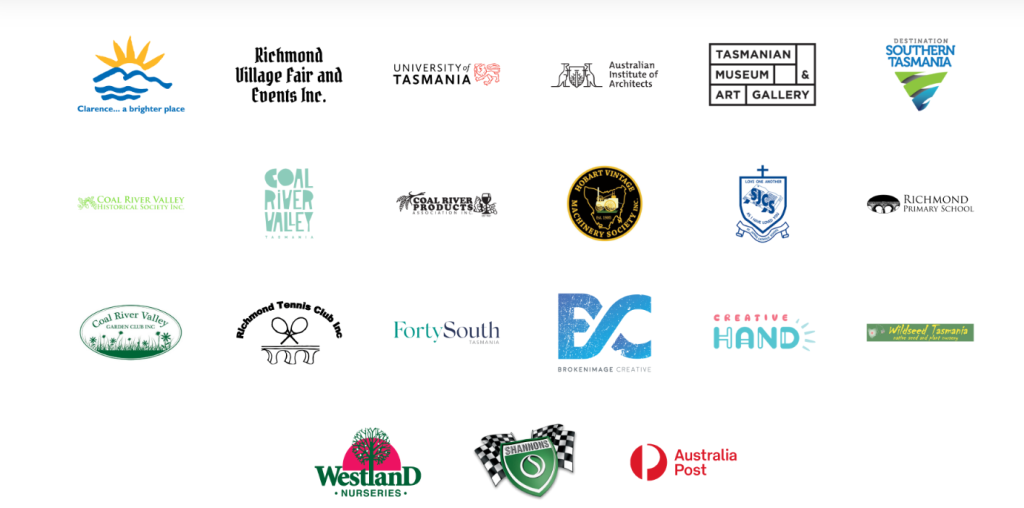In 2019, locals from the Richmond Village Fair and the Richmond Advisory Committee began talking about how to mark Richmond’s 200th birthday. Working with the City of Clarence, they set up a planning committee to bring the idea to life.
The Richmond Bicentenary was run by a passionate mix of paid staff and almost 300 volunteers from the community — they donated their time, skills, and local knowledge with funding and support from City of Clarence.
From December 2023 to March 2024, Bicentenary commemorations comprised a program of themed long weekends full of community events, art, music, exhibitions, food, and entertainment throughout the valley.
Program
Over five themed weekends, Richmond’s bicentenary program brought together history, art, music, nature, food, heritage, and community celebrations across the valley. Each weekend featured exhibitions, performances, talks, and participatory events, culminating in a village fair and community street party.
The Bicentenary program commenced with two ‘lead-up’ projects during 2023: Richmond Talks, monthly community conversations about topics related the Coal River Valley, and information about the Bicentenary program, and 200 Richmond Trees, provided an opportunity for residents to be given a commemorative tree.
The first three weekends were reflective and commemorative. The fourth weekend focused on the town’s anniversary and its built heritage. The final weekend included the annual Richmond Village Fair and a street party for residents. The richness and diversity of events and projects ensured a series of interesting and enjoyable weekends, each with focused resident and visitor appeal. All weekends included Aboriginal recognition and events developed in consultation with Aboriginal advisors.
In summary, the overall program comprised 50 events and activities: Seven major events, 17 special events, Eight exhibitions and displays, 14 music concerts, and four special Clarence City Council projects, attracting more than 30,373 visits.
The launch weekend was mammoth – Sounding the Bridge concert on Friday night, two significant exhibitions, and the Bridge Street Community Parade – 100s participated: walking, riding and driving.
The Clarence City Band and Bicentenary Children’s Choir entertained audiences prior to the formal speeches MC’d by broadcaster, Jane Longhurst, which included, Pakana Elder, Theresa Sainty, Councillor Brendan Blomeley, Mayor of Clarence, The Honourable Mark Shelton, Speaker of the House of Assembly, Liberal member for Lyons, representing the Tasmanian Premier and Minister for State Growth, The Hon Jeremy Rockcliff, and the Governor of Tasmania, Her Excellency the Hon Barbara Baker AC.
An estimated 5,000 watched the parade and up to 10,000 people visited Richmond over the weekend.
The second weekend, Richmond History Festival, opened on Friday afternoon, 18 January, with journalist Chris Wisbey’s engaging interview with long-term local resident, Madeleine Shaw, followed by an evening keynote address by esteemed Professor Henry Reynolds, with 20 more speakers engaging audiences on Saturday and Sunday. The history program was complemented by two exhibitions. A total of 318 people attended the Richmond History Festival.
ARichmond Convict Muster was the main event for the third weekend. It included two days of talks and a day discussing and researching convict heritage. 309 people attended talks. The complementary Heritage Farming Expo at nearby Summer Hill Farm was a captivating success with 1300 visitors. The weekend also included a community dance, two music performances and an exhibition.
Open House Richmond in partnership with Australian Institute of Architects (Tas Branch) was the signature event for weekend four. Residents shared the village and valley by opening their doors to visitors – a fitting recognition of the town’s 200th anniversary. The program comprised 56 activities: including, 38 open properties, four cemetery walking tours, five exhibitions, five music concerts, special events – a dinner at the Star & Garter Inn and two events at Roslyn Estate, and an art class. A total of 9,684 visits were recorded.
Richmond Village Fair rewarded 1800 visitors, and a street party for residents attracted 200 guests (539 registered but many were dissuaded by the Bicentenary’s only wet weather day). Food and music were enjoyed as the final event.
Weekend-by-Weekend Highlights
Weekend 1 (8–11 December 2023) – Bicentenary launch and 200th anniversary of Richmond Bridge
- Sounding the Bridge – music performances: mulaka milaythina, The Hunting Ground (Louise Denson/Nunami Sculthorpe-Green) and the premier of Bridge (Louise Denson)
- Richmond Bridge – exhibition of locally owned artworks and objects depicting the bridge, curated by Noel Frankham, Supper Room, Richmond.
- Mumirimina: People and Country – portraits of Tasmanian Aboriginal people connected with the Richmond district. Curated by Noel Frankham and Theresa Sainty. Richmond Courthouse.
- Richmond Town Parade – 5,000 people, vehicles and animals moving along Bridge Street and over the bridge.
- Vehicle Display -passenger and work vehicles from each of the previous 20 decades, Richmond Village Green and Richmond Memorial Recreation Park.
- Bicentenary Launch – music, speeches and official launch by the Her Excellency the Honourable Barbara Baker AC.
Weekend 2 (19–22 January 2024) – Richmond History Festival
- Richmond History Festival — a weekend of talks, conversation and presentations about Richmond and Coal River Valley.
- The Barnes Collection: Richmond Photographs collected by Ray and Frances Barnes.
- Mumirimina: People and Country – portraits of Tasmanian Aboriginal people connected with the Richmond district. Curated by Noel Frankham and Theresa Sainty. Richmond Courthouse.
Weekend 3 (3–11 February 2024) – Convict Muster and Heritage Farming Expo
- 1950s Country Dance (3 Feb) – music, song, dance and traditional country supper.
- Convict Muster (10–12 Feb) – talks and presentations on the district’s convict past.
- Heritage Farming Expo (10–11 Feb) – displays and demonstrations of heritage farming machinery, practices and techniques, Summer Hill Farm.
- Alexander Laing Concert – The Wolfe & Thorn (10 Feb) – music composed by controversial former Richmond Gaoler and district Police Constable, Richmond Gaol.
- Young Irelanders in Van Diemen’s Land – A Musical History (11 Feb, St John’s Catholic Church).
- Mumirimina: People and Country – portraits of Tasmanian Aboriginal people connected with the Richmond district. Curated by Noel Frankham and Theresa Sainty. Richmond Courthouse.
Weekend 4 (23–27 February 2024) 200th Anniversary of Richmond’s declaration as a town
- Open House Richmond (24-25 Feb) program of 38 open homes and public buildings, gardens, 4 guided walking tours, 5 music performances and exhibitions, and special events.
- Star & Garter ‘Campaign Dinner’ – commemorating Richmond’s 1856 dinner for House of Assembly election candidates
- Postcards by Heritage Fiddle Ensemble (24 Feb) Richmond Town Hall.
- Wesley Stacey’s 1960s Richmond – ‘a moment in time’ exhibition of photographs recording Richmond prior to its emergence as a heritage tourism destination. Curated by Noel Frankham. Supper Room, Richmond.
- Hidden History – an exhibition of objects found in, under and around local properties, items suggesting past lives in Richmond. Curated by Michael Macphail and Noel Frankham. Supper Room Richmond.
- John Eldershaw’s Mill House – 14 paintings by Eldershaw exhibited in the house in which they were painted in the 1920s and ’30s. Curated by Noel Frankham. Mill House, Richmond.
- Church Memorabilia and Relics – from the St John’s Catholic Church and Diocese collection, Old School House, St John’s.
- Mumirimina: People and Country – portraits of Tasmanian Aboriginal people connected with the Richmond district. Curated by Noel Frankham and Theresa Sainty. Richmond Courthouse.
- Southern Sky a cappella ensemble –songs in St Luke’s Church – six performances
- Front Row – Australian Army Band ensemble, three performances at St Luke’s Anglican Church.
- Walking tours – Richmond cemeteries (five)
- Walking Tours – Clarence City Council history tours (two)
Weekend 5 (10 March 2024) Bicentenary finale
- Richmond Village Fair (10 Mar) Richmond Village Green
- Richmond Residents’ Street Party (10 Mar), Richmond Village Green
- Mumirimina: People and Country – portraits of Tasmanian Aboriginal people connected with the Richmond district. Curated by Noel Frankham and Theresa Sainty. Richmond Courthouse.
Mumirimina band
Mumirimina country extended from the lower kutalayna/Jordan River along the eastern shore of the Derwent, encompassing Kangaroo Bay, across to Pittwater, and north along the Coal River Valley. Richmond represented a significant meeting place and crossing point for the Mumirimina and the other nine Oyster Bay bands, and the neighbouring Big River people.
The lands around Richmond were fire-farmed, managed, and hunted by the Mumirimina for millennia. British invasion of Mumirimina country commenced with Lieutenant Bowen’s arrival in 1803 and quickly expanded to the east and south with brutality and destruction of the Mumirimina. Despite concerted resistance against the British by Oyster Bay and Big River nations’ people, their food sources were depleted, lands lost (but never ceded), and their peoples decimated.
Richmond’s History
The British established their Van Diemen’s Land (lutruwita/Tasmania) settlement at Piyura kitina/Risdon Cove on eastern side of the Derwent River in 1803. Exploration of the district further to the east commenced soon afterwards.
For millennia, the lands to the Derwent River’s east had been the home of the Mumirimina people of the Oyster Bay nation. Their valley and its river, the district now known as Richmond and the Coal River Valley, was an important hunting ground, meeting point, and crossing point for the Oyster Bay and Big River people.
By 1808, land grants along the Coal River encroached further east. The new occupiers also saw the significance of the location and a bridge over the river was commenced in 1823, with the town of Richmond being proclaimed in February 1824. As a police district, it had a role in preventing traditional owners from using their lands and contributed to the ultimate destruction of the Mumirimina band. Within 15 years of Richmond’s settlement, no Mumirimina remained on their country.
For around 70 years, Richmond was a key transit point, increasingly significant for agriculture, and a regional centre until it was bypassed by the causeways across Pittwater and the north-south rail line in 1873 and 1876 respectively.
Agriculture remained the core industry, but the town drifted into a century of reduced relevance. In the 1970s, with increasing interest in heritage, Richmond began retelling its story and became a nationally significant tourism destination.
Richmond’s proximity to Hobart and the airport, together with many heritage-listed properties and the valley’s fine wine industry enhanced its tourism appeal. In the 21st century, Richmond’s community is a mix of descendants of early residents, and people who chose to move into the area for its heritage charm.
Attendance
A total of approximately 30,373 people visited over the Bicentenary program, including Richmond Talks in 2023.
- An estimated 5,000 people attended the 10 December parade. Approximately 10,000 visited the village over Bridge Anniversary weekend.
- The Town Anniversary weekend, Open House Richmond, attracted 9,684 visits.
- Richmond Village Fair attracted 1800 visitors.
- And the final event, a street party for residents – 539 registrations reduced to 200 actual attendances, due to wet weather.
- Attendances at other Bicentenary events totalled, 8,689

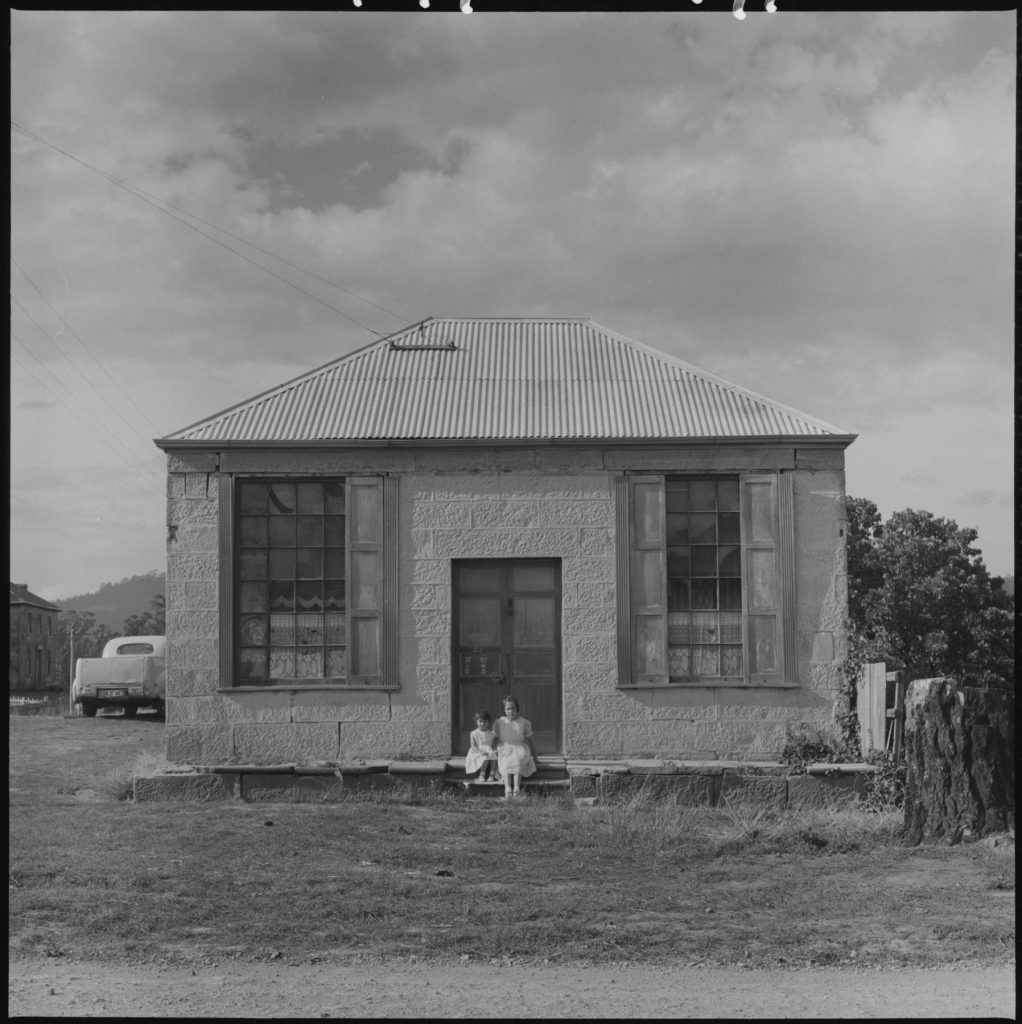
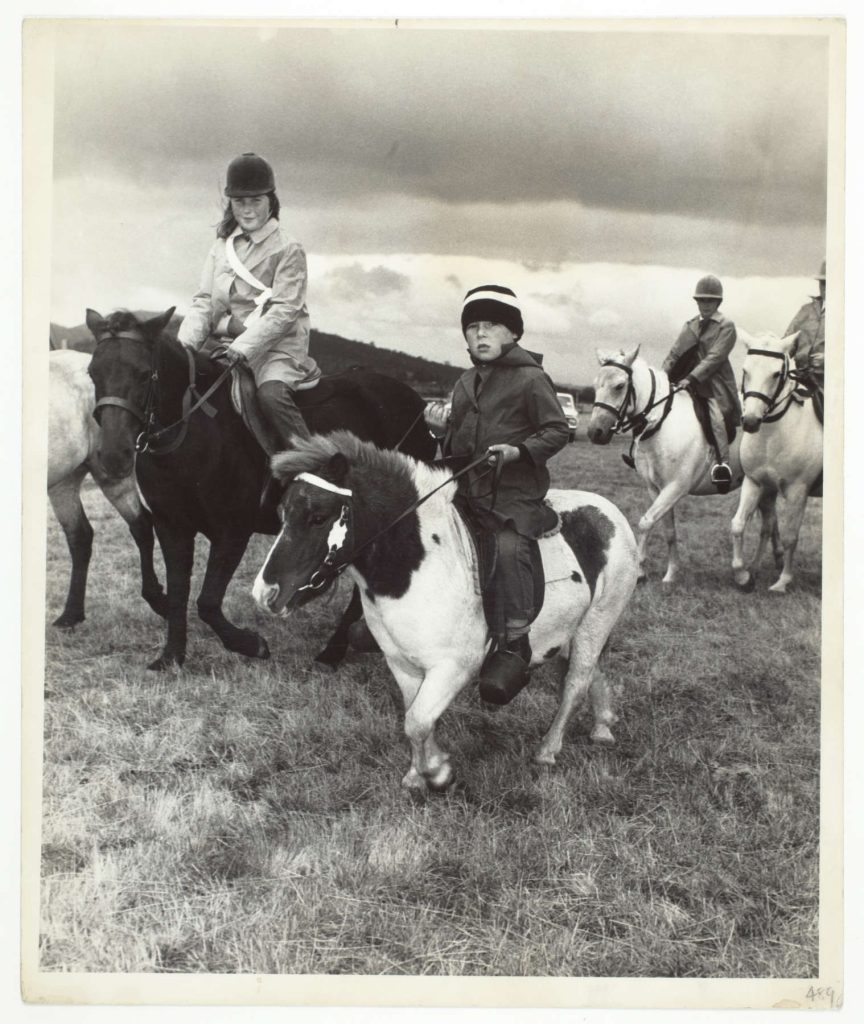


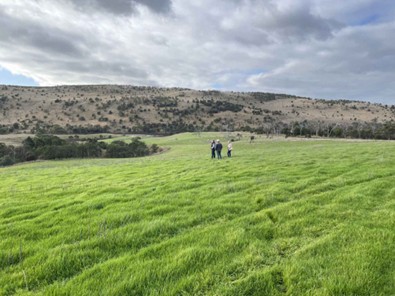
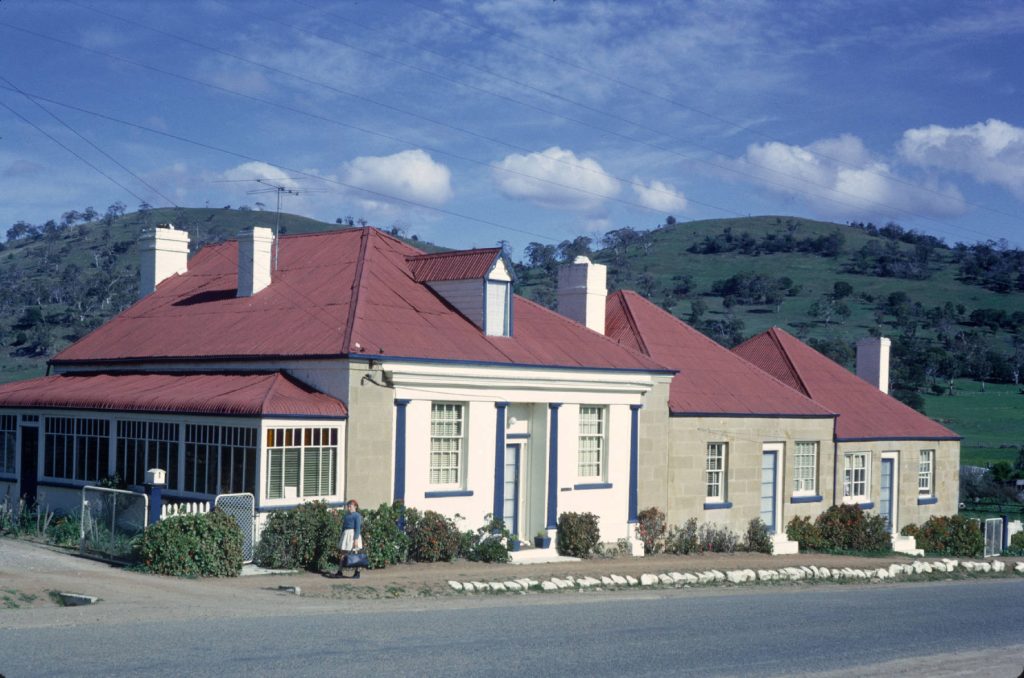
Richmond Bicentenary Team Members
- Prof Noel Frankham – Creative Director
- Dr Yue Ma – Administrator
- Ingrid Rahlen – Production Manager and Associate Producer
- Theresa Sainty – Tasmanian Aboriginal Cultural Advisor
- Jonty Dalton – Designer and Website Developer
Five Interns from the University of Tasmania’s Master of Tourism, Environmental and Cultural Heritage program worked with the Bicentenary on projects in 2023. Three continued to work as volunteers following the completion of their formal internship.
Tasmanian Aboriginal cultural advice
Tasmanian Aboriginal cultural advisor, Theresa Sainty, and Bicentenary creative director, Noel Frankham, worked together to ensure that the Bicentenary respectfully recognised the rich cultural history and the tragic outcomes for Mumirimina resulting from British invasion, whilst also celebrating the strength and vitality of contemporary Tasmanian Aboriginal culture.
The tragic stories of the Mumirimina people have been hidden for too long. Accordingly, it was crucially important that the Richmond Bicentenary was consultative, honest and respectful in its inclusion of Tasmanian Aboriginal content. Exhibitions, interpretation signage and artworks, and walking tours and talks were among the events and projects developed over the four-month Bicentenary program that recognised traditional owners, past, present, and emerging.
Theresa also worked with Clarence City Council to develop interpretation panels and objects installed at three sites near the Coal River and Richmond Bridge that begin to tell the stories of the people whose lands were stolen by the British.
The Richmond Bicentenary Committee comprised:
- Councillor Heather Chong – Chair
- Ms Sue Harmsen – 200 Richmond Trees Project, Open House Richmond, and sponsorship and media support
- Mr Gary Richardson – leadership of the Richmond Bicentenary launch weekend
- Dr Alan Brooks – leadership of Richmond History Festival
- Dr Dianne Snowden – leadership of Richmond Convict Muster
- Ms Jessie Geraghty – co-leadership Open House Richmond and sponsorship and media support
- Dr Wills Wurf – co-leadership Open House Richmond
- Ms Tracey Cockburn – Clarence City Council liaison and advocacy
Volunteers
The Bicentenary program could not have been realised without the support of nearly 300 generous volunteers. Along with the 8-member planning committee, over 60 volunteers made consistent contributions during the four-month period, another 230 people volunteered for specific events during the program. Many people volunteered repeatedly.
Partners and Sponsors
Along with Clarence City Council, there were nine core partners:
- Richmond Village Fair and Events, Inc (Auspicing, Richmond Village Fair, and Street Party for Residents)
- Hobart Vintage Machinery Society, Inc. (Bridge Street Community Parade and Heritage farming Expo)
- University of Tasmania (Master of Tourism, Environmental and Cultural Heritage program Interns)
- Libraries Tasmania and Tasmanian Archives
- Australian Institute of Architects (Tas Branch)
- Tasmanian Museum and Art Gallery
- Coal River Valley Historical Society Inc.
- Coal River Products Association
- Tasmanian Heritage Council
59 In-kind sponsors included:
- 17 Government agencies, museums and collections, and institutions
- 20 Community groups, institutions, clubs, and associations
- 22 Businesses
